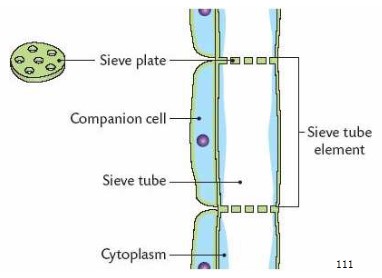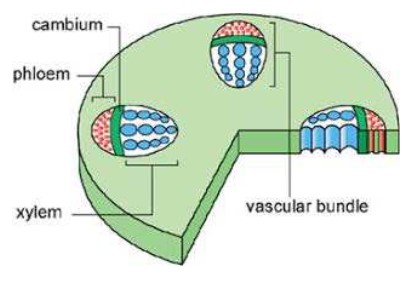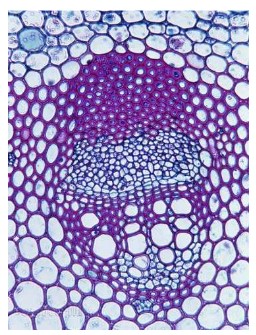Topic 9: Plant biology (HL)
9.2 Transport in the phleom of plant
Transportation in phloem:
- Sources: site of photosynthesis
- Sink: storage of molecules
- Organic molecules such as sucrose and amino acids move from a source to a sink via phloem tubes in plants.
- Phloem tubes can carry sugars and amino acids in a variety of directions; depending on where the source and the sinks are located (sometimes roots can be sources or sinks).
- Sources produce sugars by photosynthesis in leaves or green stems or by hydrolysis of starch in storage vessels (germinating seeds or roots/tubers) and deliver these products via the phloem to the sink (roots, buds, stem, seeds, and fruits).
- At the source, sugar and other organic molecules are loaded into the sieve tube members thus increasing solute concentration within the sieve tube cells (deceases water potential).
• Water from surrounding tissues, enters the sieve tube members by osmosis following a concentration gradient. - The water absorbed into the sieve tube creates hydrostatic pressure that forces the phloem sap to flow (bulk flow) towards the sink.
1. Active transport of sugar from leaves to phloem
2. Water concentration attracts water diffuses from xylem to phloem
3. High pressure is generated by water and sugar
4. Water and sugar moves down from leaves to root
5. Active transport moves sugar molecules to root cells
6. Water concentration decreases, water diffuses back to xylem
7. This will create low pressure, causing water to move up

Structure of phloem:
- Organic molecules such as sucrose and amino acids move from a source to a sink via phloem tubes in plants.
- Phloem is composed of living tissue called sieve plates (lack a nucleus) that are joined end to end to form a tube that conducts food materials throughout the plant. They are bordered by companion cells that carry out the cellular functions of a sieve-tube element.
- Rigid cell walls – building up for high pressure
- Sieve plates – large pores in cell wall speeding the transport between sieve element cells
- Companion cells – provide nutrients and energy to sieve element cells

Vascular bundle:
- Cambium layer – undifferentiated cells which can become xylem or phloem
- Pith – woody part in between vascular bundle
- Epidermis cells – surface cells
- Phloem – smaller tubes
- Xylem – larger tubes


